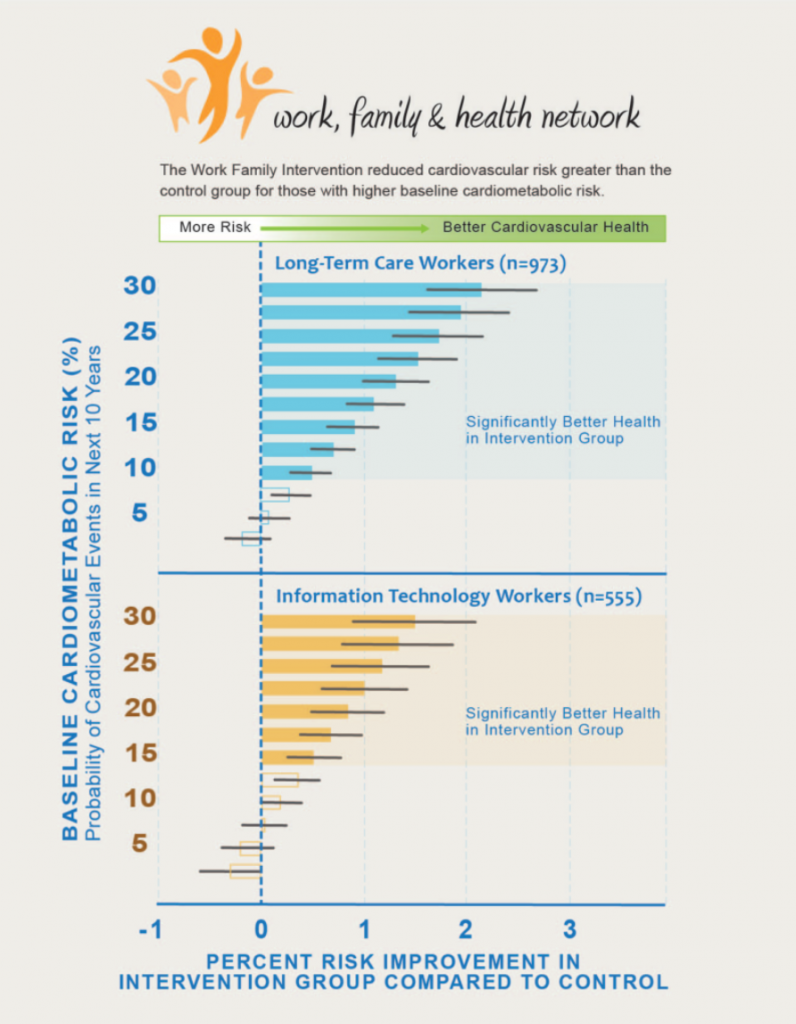A recent study by Harvard T.H. Chan School of Public Health and Penn State University revealed an unexpected ally in the fight against heart disease – workplace flexibility. In today’s fast-paced, high-stress professional world, protecting employee heart health is increasingly important.
This research offers insights for employers seeking to improve employee cardiovascular health and work-life balance while maintaining peak productivity.
Pressed for time? Here’s a quick summary…
- Intervention strategies: The study focused on improving work-life balance by strengthening managerial support and giving employees control over their schedules and tasks, balancing job performance with well-being.
- Key health outcomes: Significant heart health improvements were found, especially among employees over 45 years old and those at higher cardiovascular risk.
- Workplace implications: Tailoring flexible work arrangements, like remote work and adjustable hours, to accommodate unique needs can bridge health inequities and improve well-being without compromising productivity.
Study Participant Profile & Interventions

The study’s participants included 1,528 employees from two companies:
- An IT firm with a mix of mid-salaried male and female technical workers
- A long-term care company with predominantly female, lower-wage caregivers
Researchers improved participants’ work-life balance by:
- Boosting managerial support: Supervisors were trained to more effectively support their teams’ work-life balance.
- Empowering employees with autonomy: Teams were encouraged to adjust their schedules and tasks to better fit personal and family needs.
This approach created a work environment where job performance and personal well-being were both prioritized. To assess the impact, researchers measured health metrics like blood pressure and cholesterol levels to determine each participant’s risk of developing heart disease.
Key Findings
The most notable heart health improvements were among older employees (45+ years old) and those with a higher initial risk of cardiovascular disease. Their risk reductions were comparable to reversing five to 10 years of age-related heart health changes.
Company-specific effects varied:
- IT company employees experienced heart health improvements equivalent to reversing 5.5 years of aging.
- Long-term care employees experienced improvements equivalent to 10.3 years.
Notably, these benefits were achieved without impacting productivity.

Bigger Picture: Workplace Flexibility For Employee Health
These findings underscore the connection between reduced workplace stress, greater work-life balance, and lower heart disease risk. This is particularly relevant for:
- Older, higher-risk employees
- Employees in middle-wage positions, who typically have less autonomy over their work schedules
- Parents and caregivers, who often experience work-family conflicts

By tailoring arrangements like remote work, adjustable hours, or part-time roles to accommodate unique needs, organizations can bridge health inequities and enhance well-being. Training managers to recognize and support individual needs, and to work collaboratively in adjusting work hours and tasks, is key to making flexibility a practical reality.
Beyond heart health, the benefits of workplace flexibility extend to various aspects of well-being. It improves mental health by reducing stress and anxiety, mitigates burnout, and boosts job satisfaction. These factors contribute to a more engaged, productive, and loyal workforce, creating a win-win scenario for employees and employers.












